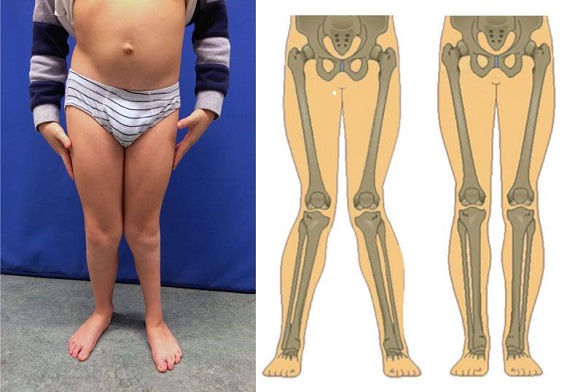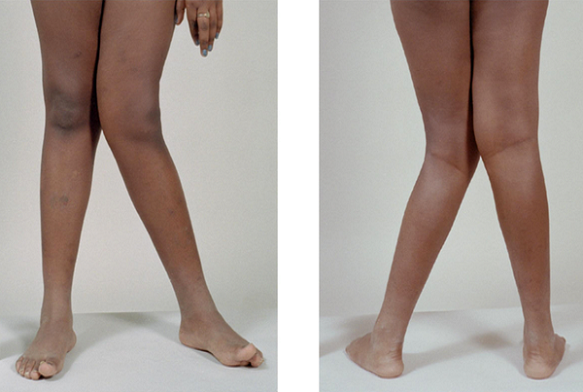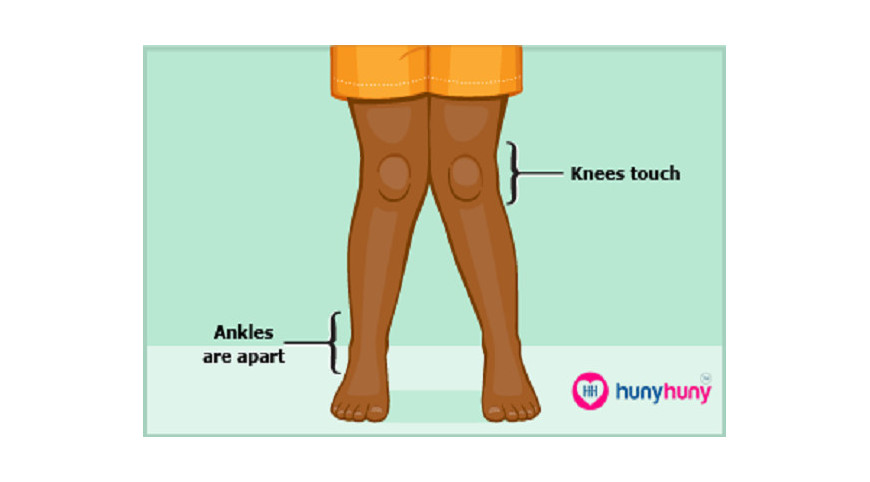Knock Knees In Babies
Knock Knees - What does it mean?
Knock knees are the condition where knees have angular deformities. Here deformity points inward. When an average-weight child stands with his or her legs together with feet pointed straight ahead, and their knees touch with each other but their ankles do not, that child is said to have knock knees. The medical term for knock knee is “Genu valgum”. Knock knees are a common condition that develops during a child’s normal growth and development (physiologic valgus).
Growth And Development In Children

Knowledge of changes in a child’s legs during their growth is important in understanding this condition.
Mostly all children have bowlegged (genu varum) or knock-kneed period during their growth. A child’s ability to crawl, walk, run or play is not affected by physiologic knock knees. This condition usually auto-corrects, naturally as children grow.
The normal growth and development for children, from infancy to the age of 10 are as follows:
From infancy to 18 months, a child initially has bowlegged, causing toddlers to often walk with their feet wide apart.
When the child is between 1 ½ (18 months) and 2 ½ (30 months) years, the legs have usually straightened.
By 3 to 4 years, the child’s legs typically grow into a knock-knee (valgus) position, to maintain stability and help them walk.
Finally, by age 8 to 10 years, the child’s legs have settled into what will likely be their adult alignment.
In some rare cases, knock knees may continue till adolescence. Research shows that knock knees syndrome is slightly more common in girls than boys.
When to Worry and Seek Medical Attention

Generally, a child’s leg will straighten naturally by the teen years. However, if you notice the condition to continue or worsen with age, it may be the result of a disease like rickets, arthritis, injury to the growth plate around the knee, infection, tumor, and Blount’s disease (a growth disorder of the shinbone), which causes changes in the curvature of the legs.
Following are some signs that suggest a child’s bowlegs or knock-knees needs attention:
#1. Extreme curvature.
#2. Only a single side is affected.
#3. The bowlegs get worse after the age of two years.
#4. The child complains about knee pain or facing difficulty in walking or running.
#5. The child also is unusually short for his age.
#6. A child develops knock knees in adulthood.
Talk to your pediatrician, if your child shows any of the above symptoms.
Causes of Knock Knees
#1. There are a variety of causes that arises the condition of knock knees including lack of nutrition like Calcium, Phosphate, Vitamin D i.e. insufficient exposure to sunlight, idiopathic, or physiological and infectious problem. It results in bone weakening and softening. (Lack of nutrition is usually treated with lifestyle modifications in the form of sufficient sun exposure to receiving the daily requirements of Vitamin D and a rich calcium diet. Supplements of calcium and Vitamin D can be used too.)
#2. They are a variable group of genetic bone diseases or genetic skeletal dysplasia.
#3. Trauma
#4. Toxic - Excess of Cadmium results in osteomyelitis. It produces a toxic which is harmful to the bones, results in the deficiency of vitamin D, which ultimately leads to the weakening of bones, fractures, and permanent deformation.
#5. Excessive pressure on the knees - It is usually the result of obesity and lose knee ligaments.
Conclusion
In general cases, it only needs parental observation, as knock knees don't need to be treated because the child usually outgrows the problem as it tends to correct itself with time. Children don’t need to avoid physical activities, wear supportive leg braces or shoes. They do not need any special exercise or therapy for it but maintaining a regular exercise and yoga routine will help a lot in not reaching a situation that requires surgery. You can find a lot of Yoga Asanas on the internet, which you can easily instill in your baby’s daily routine life.
Knock knees do not possess any threat to a child’s normal growth unless they start to cause problems like knee pain or difficulty in walking or running.
Knock Knee is not any disease but lacks awareness, If parents are properly aware of this, it can be cured with simple yoga and exercises at a very early stage.
Follow us on Facebook, Instagram, and LinkedIn for more such exclusive information on parenting.
Happy Parenting!!

Comments
No comment at this time!
Leave your comment